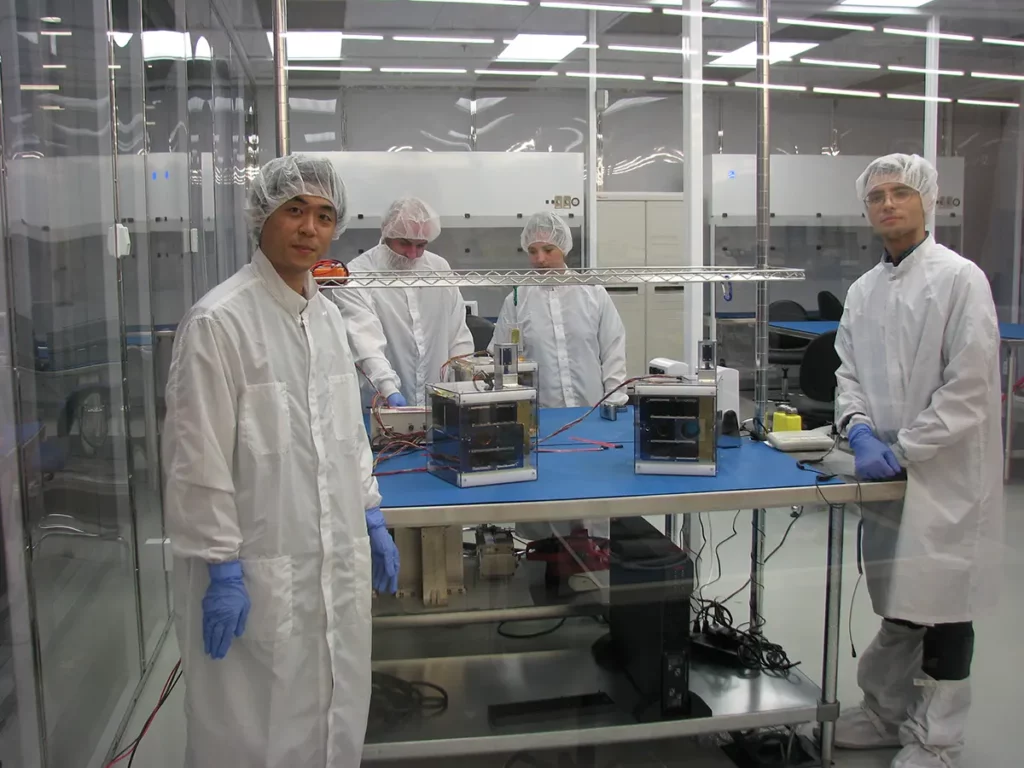SFL Celebrates 10th Anniversary of Two Operational BRITE Space Astronomy Nanosatellites

In the Summer of 2014, scientists from around the world cheered the operational deployment of the final two nanosatellites in the BRITE space astronomy mission. Canada’s BRITE-Toronto launched on June 19 followed by Poland’s BRITE-PL2 two months later. They joined in orbit two Austrian and another Polish BRITE satellite that had been launched in 2013 – all developed by SFL.
Remarkably, BRITE-Toronto and -PL2 remain operational and still collect scientific data today.
BRITE, which stands for BRIght Target Explorer, has achieved notable success both for its astronomical research and technological innovation involving incredibly small spacecraft. All five of the original 7-kg, 20x20x20 cm nanosatellites made observations long past their expected two-year design life.
The BRITE constellation is widely viewed as opening the domain for use of miniature spacecraft for important science missions, such as space astronomy.
“We never expected [the BRITE mission] would last this long,” said Prof. Andrzej Pigulski of the University of Wroclaw in Poland. “We are very happy with the scientific results because it was not clear from the beginning if the data from satellites so small would be useful for science.”
The operation of the BRITE-Constellation has led to many scientific discoveries to date.
SFL developed the entire constellation. Four were built at our facility in Toronto while the others were integrated in Austria and Poland using our design and components. A sixth satellite was developed but failed to separate from the launch vehicle for unknown reasons.
The overall objective of BRITE was to perform astronomical observations that aren’t possible from terrestrial instruments. The BRITE goal was to monitor our galaxy’s brightest variable stars, which means their brightness changes over time. This required a constellation of satellites that could continually observe the widely separated luminous stars for the weeks or months of their brightness cycles.
Spacecraft stability and precise instrument pointing – all related to attitude control technology – were paramount to mission success because the onboard telescopes had to point continuously at target stars for long periods. Attitude control keeps a low-inertia spacecraft stable in orbit, something once thought impossible for nanosatellites the mass of BRITE.
The results speak for themselves: BRITE observed 66 star fields and studied 720 individual stars. The data has been shared with researchers worldwide, resulting in publication of more than 200 scientific papers and providing insights into the structure and evolution of the galaxy’s most luminous stars. Repeated annual observations of the same stars over a decade contributed greatly to the value of the data.
SFL’s unique approach to building a spacecraft also contributed to the BRITE success. We develop satellites with a philosophy of robustness and significant design margins in mind while achieving low cost. In addition, we apply discipline, rigor and focused practices – an adaptive form of the “microspace approach” to satellite development – in designing and assembling the spacecraft and its components.
“BRITE is an example of how leading-edge space astronomy can be accomplished with very low-cost satellites and out-of-the-box thinking,” said Zee. “With smaller satellites, the right team and through collaboration, the return on investment can be extraordinarily high.”
Read Part 2 of this blog next week to learn more about the scientific observations made by BRITE that have been delivered to astronomers around the world.
